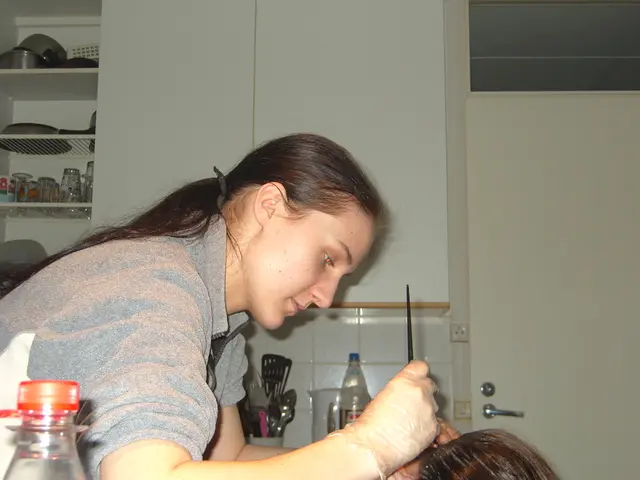Severe Rosacea Outburst: trigger factors, visible indications, and recovery strategies
Breaking Down Rosacea Fulminans: The Untamed Skin Condition
Let's dive into the less-known, intense skin condition – Rosacea Fulminans, often referred to as Pyoderma Faciale. This beast mainly targets the central part of the face, namely the chin, cheeks, and nose, causing a flurry of symptoms that set it apart from usual rosacea or acne.
Rosacea Fulminans, while predominantly impacting females of childbearing age, shrouds its cause in mystery. However, recent findings hint at connections with inflammatory bowel disease and pregnancy, as well as previous instances of ordinary rosacea.
Emotional stress, hormonal fluctuations, specific medications, or dietary factors can potentially ignite Rosacea Fulminans. Yet, it's crucial to note that dietary triggers possibly linked to rosacea symtoms might not be unique to Rosacea Fulminans.
How do I recognize Rosacea Fulminans?
Symptoms of Rosacea Fulminans primarily assault the forehead, nose, cheeks, and chin. You might encounter:
- Sudden, severe, and localized reddening
- Painful pustules, papules, and nodules that might merge
- Swelling and inflammation
- Flushing and blushing
- Stinging and burning
Some people may experience ocular symptoms, like dry, burning, or itching eyes, or sensitivity to light. Systemic symptoms, such as fever and fatigue, are rare.
Navigating through Treatment Options
Combatting Rosacea Fulminans may involve prescription medications like oral Isotretinoin, a potent acne treatment, and corticosteroids. Antibiotics, coupled with corticosteroids and lifestyle changes, have also shown promise in managing symptoms.
Given that specific factors could trigger or exacerbate rosacea, healthcare professionals might recommend identifying and avoiding these triggers. This could translate into lowering stress, making certain dietary adjustments, or using gentle skin care products on the face.
When to Seek Medical Help
Consult a dermatologist or another healthcare professional if you:
- Experience symptoms beyond standard rosacea or acne, such as large, tender nodules, abscesses, significant facial discomfort
- Witness a sudden onset of symptoms
- Endure persisting or worsening symptoms despite over-the-counter medications or rosacea therapies
- Notice eye irritation or inflammation
- Experience systemic symptoms, including fever
Prompt medical attention is essential for a correct diagnosis and timely treatment, assisting in controlling symptoms, minimizing potential complications, and helping manage emotional distress.
Connecting with a healthcare professional means receiving personalized care and comprehensive management strategies tailored to specific needs and circumstances.
- The intense skin condition known as Rosacea Fulminans, often referred to as Pyoderma Faciale, is a medical-condition that primarily targets areas like the forehead, nose, cheeks, and chin.
- Symptoms of Rosacea Fulminans can include sudden, severe, and localized reddening, painful pustules, papules, and nodules, swelling and inflammation, flushing and blushing, stinging and burning, ocular symptoms like dry, burning, or itching eyes, or sensitivity to light, and in rare cases, systemic symptoms such as fever and fatigue.
- Treatment for Rosacea Fulminans may involve prescription medications like oral Isotretinoin, a potent acne treatment, and corticosteroids, antibiotics, lifestyle changes, and identifying and avoiding potential triggers, which could include stress, hormonal fluctuations, specific medications, or dietary factors.
- If you experience symptoms beyond standard rosacea or acne, such as large, tender nodules, abscesses, significant facial discomfort, a sudden onset of symptoms, persisting or worsening symptoms, eye irritation or inflammation, or systemic symptoms including fever, it's essential to seek help from a dermatologist or another healthcare professional for a correct diagnosis and timely treatment.








